Have you ever considered growing a sunflower garden and enjoying a tasty snack from the same plants? Saving sunflower seeds is not only easy but also incredibly rewarding. By learning how to save sunflower seeds, you can have a steady supply for next year’s garden and a healthy snack to boot.
This guide will show you the simple steps to harvest, dry, and store sunflower seeds. You’ll learn why saving seeds is beneficial, how to identify when seeds are ready, and tips for keeping them viable. Whether you’re a seasoned gardener or just starting, there’s something here for you.
Ready to make your sunflower garden thrive every year? Keep reading to discover how to save and collect sunflower seeds for endless blooms and delicious snacks.
- Related Article: Seed Saving Guide
7 Key Takeaways on Saving Sunflower Seeds
- Saving sunflower seeds is easy and rewarding. You get seeds for planting or snacking without buying new ones each year.
- You save money and select the best plants. Plus, you help preserve sunflower diversity.
- You can save seeds from both decorative and edible sunflowers. Common sunflowers (Helianthus annuus) come in many colors and types.
- Annual sunflowers are the best for seed saving. They are easy to grow and produce many seeds.
- Harvest the seeds when the back petals turn yellow or brown. The petals will dry and fall off. The seeds should feel firm and plump.
- Dry the sunflower heads upside down in a warm, airy place for 4-5 days. This prevents mold.
- Store the seeds in cool, dry, dark places. Use paper envelopes or glass jars. Label them with the variety and harvest year. Keep them safe from moisture and pests.
Overview of Sunflower Seeds: Why Save Them?
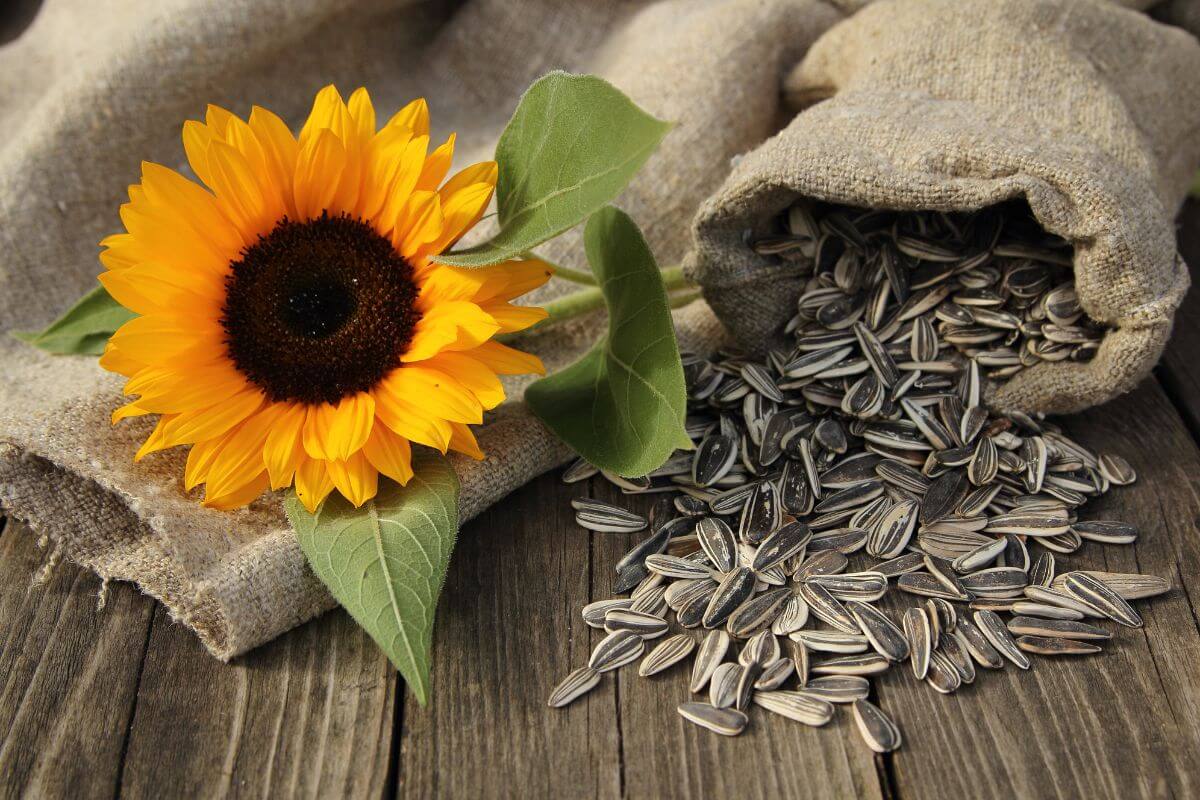
Saving sunflower seeds is easy and rewarding. You can have seeds for next year’s garden or a tasty snack to enjoy. All you need to do is harvest mature sunflower heads, let them dry, and then collect the seeds.
Saving sunflower seeds has many benefits. It saves you money because you won’t need to buy new seeds every year. You can choose the best plants to grow which can make your sunflowers better over time. It also helps keep different sunflower varieties alive and thriving.
You can save seeds from all kinds of sunflowers, both the pretty ones and the ones you can eat. The common sunflower (Helianthus annuus) is a favorite because it has many types and colors to choose from.
While most sunflowers are perennials, annual sunflowers are the best for seed saving because they’re easy to grow and produce lots of seeds.
Aside from sunflower seeds, another great crop to grow and save seeds from is pumpkins. Saving and growing pumpkin seeds enrich your soil and support beneficial insects. It can also provide a sustainable source of this versatile fruit for autumn decorations and delicious pies each year.
How to Save Sunflower Seeds
Saving sunflower seeds involves a few quick and easy steps that will have your garden thriving with vibrant sunflowers every year.
Step 1 – Plant and Grow Sunflowers
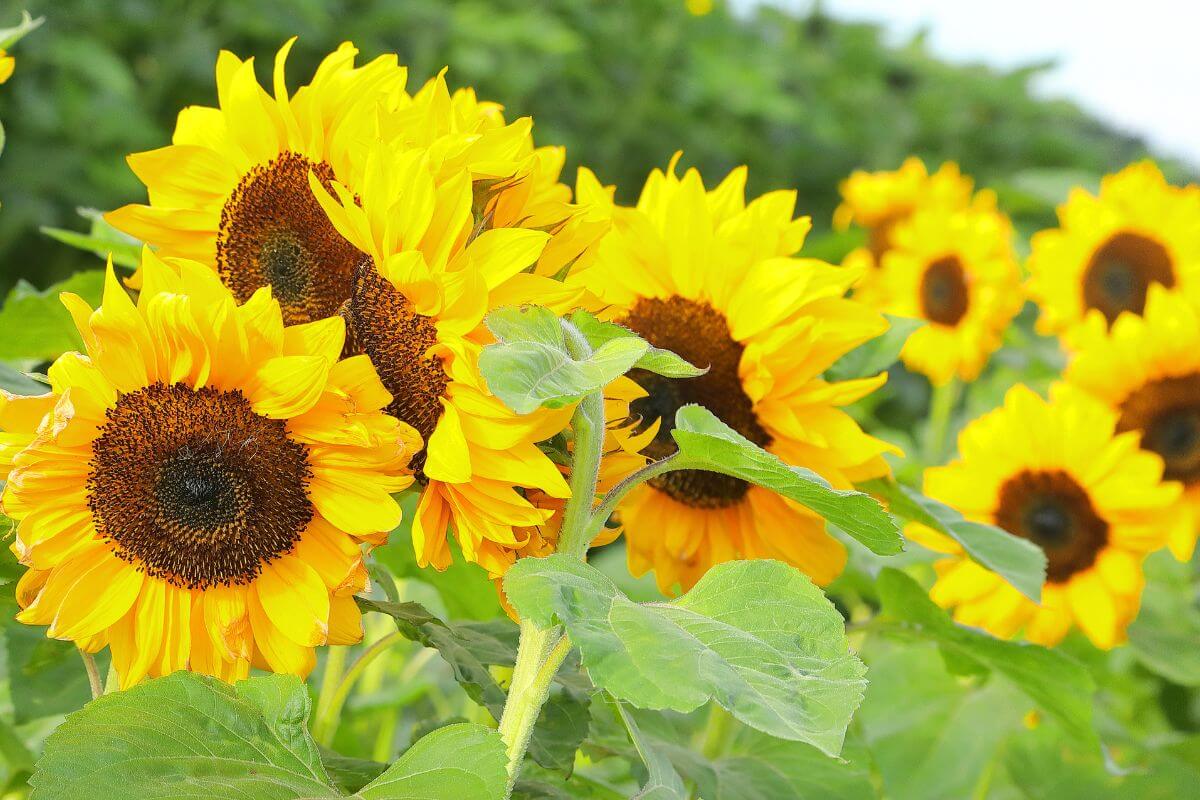
Pick a sunny spot in your garden. Sunflowers need at least 6 hours of direct sunlight each day. Prepare the soil by removing weeds and loosening it to a depth of 1-2 inches.
Plant sunflower seeds directly in the ground after the last frost. This is usually in late spring. Sow seeds 1-2 inches deep. Space them according to their size. Smaller heads need 1-2 inches apart while larger ones need 6-8 inches apart.
Water the seeds well and keep the soil moist until they sprout. Once the plants are established, water less often but deeply during dry spells.
To have sunflowers blooming all season, try succession planting. Plant new seeds every 2-3 weeks. This way, you’ll have sunflowers at different stages of growth and blooming.
Step 2 –Wait for Sunflower Seeds to Be Ready for Harvest
To know when your sunflowers are ready for seed harvesting, look for these signs:
- The back of the flower head changes from green to yellow or brown.
- Petals dry up and fall off.
- Seeds become plump and hard when you brush away the pollen.
- The stem below the flower head bends, making the flower face downward.
- Small flowers in the center brush off easily.
- Seeds show their black and white striped pattern (if the variety has them).
- Birds and small animals start showing interest in the seeds.
- The entire plant looks dry and brown.
Allow the seeds to ripen fully on the stem for the best results.
Step 3 – Dry the Sunflower Bloom
To dry sunflower blooms for seed harvesting, follow these steps:
- First, cut the sunflower head from the stalk and leave about 12 inches of stem. This gives you something to hold onto. Remove any leaves from the stem.
- Next, hang the sunflower heads upside down in a warm, dry, and well-ventilated area. You can tie 2-3 flower heads together with twine. Make sure the heads face outward for good air circulation.
- Choose a location like a garage, shed, or indoors. This protects the seeds from birds and animals.
- Allow the sunflower heads to dry for 4-5 days. The exact drying time may vary based on humidity and air circulation.
- Check that the seeds are fully dry before harvesting. They should feel hard and the back of the flower head should be brown and dry.
- Ensure there’s adequate airflow around the drying sunflowers to prevent mold.
- If you’re worried about seeds falling out, place a paper bag or cheesecloth over the flower head while it dries.
Step 4 – Harvest Sunflower Seeds
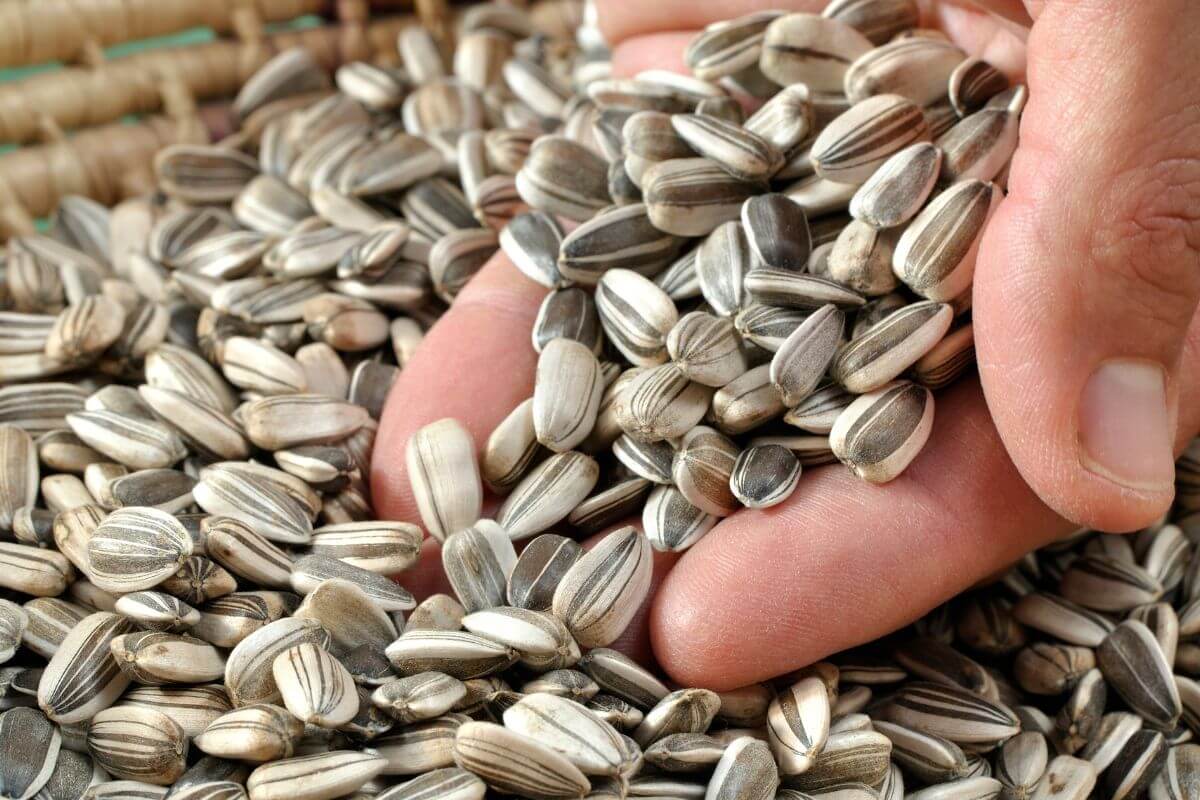
After drying the seeds, you can start harvesting sunflower seeds from the head.
First, place the dried sunflower head on a flat surface with the seeds facing up. Gently rub your hand over the surface. The mature seeds should fall out easily. If some seeds stick, use a fork to pry them out carefully.
Another way is to rub two sunflower heads together over a large bowl or bucket to loosen the seeds. For larger amounts, you can put the dried heads in a pillowcase and gently hit them against a hard surface to shake the seeds loose.
Collect all the fallen seeds in a container and remove any leftover plant bits. Brown paper bags and net mesh are popular cost-efficient options. If you want, you can winnow the seeds by pouring them from one container to another in front of a fan. This will blow away any light plant material.
Step 5 – Clean the Sunflower Seeds
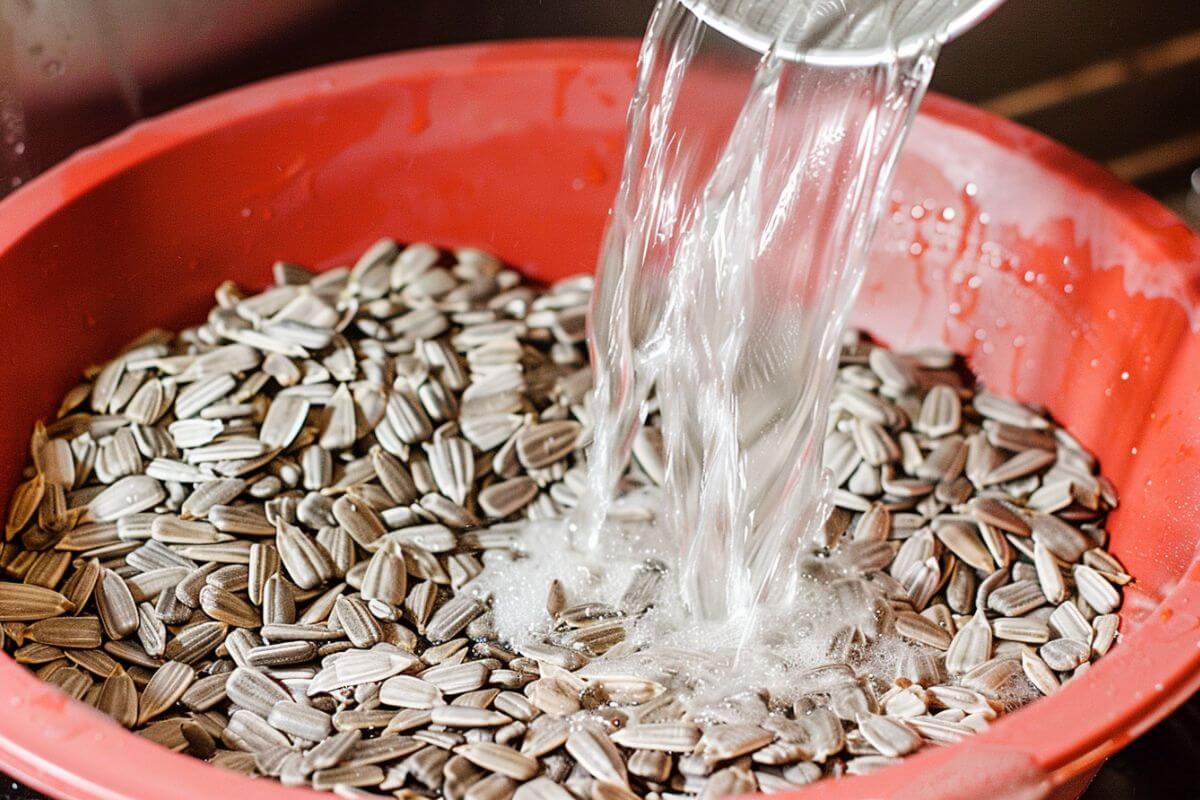
After harvesting, you need to clean sunflower seeds well before storing or using them.
- First, place the seeds in cool water to get rid of debris. Skim off any floating empty or immature seeds and debris. Keep rinsing until the water is clear.
- Next, spread the cleaned seeds in a single layer on a paper towel-lined surface. Let them air dry for 24-48 hours. Turn them occasionally to ensure even drying. Remove any remaining debris or damaged seeds.
For storage, you can treat the seeds with fungicide. Then, they are ready for planting, eating, or storing.
Step 6 – Store the Sunflower Seeds
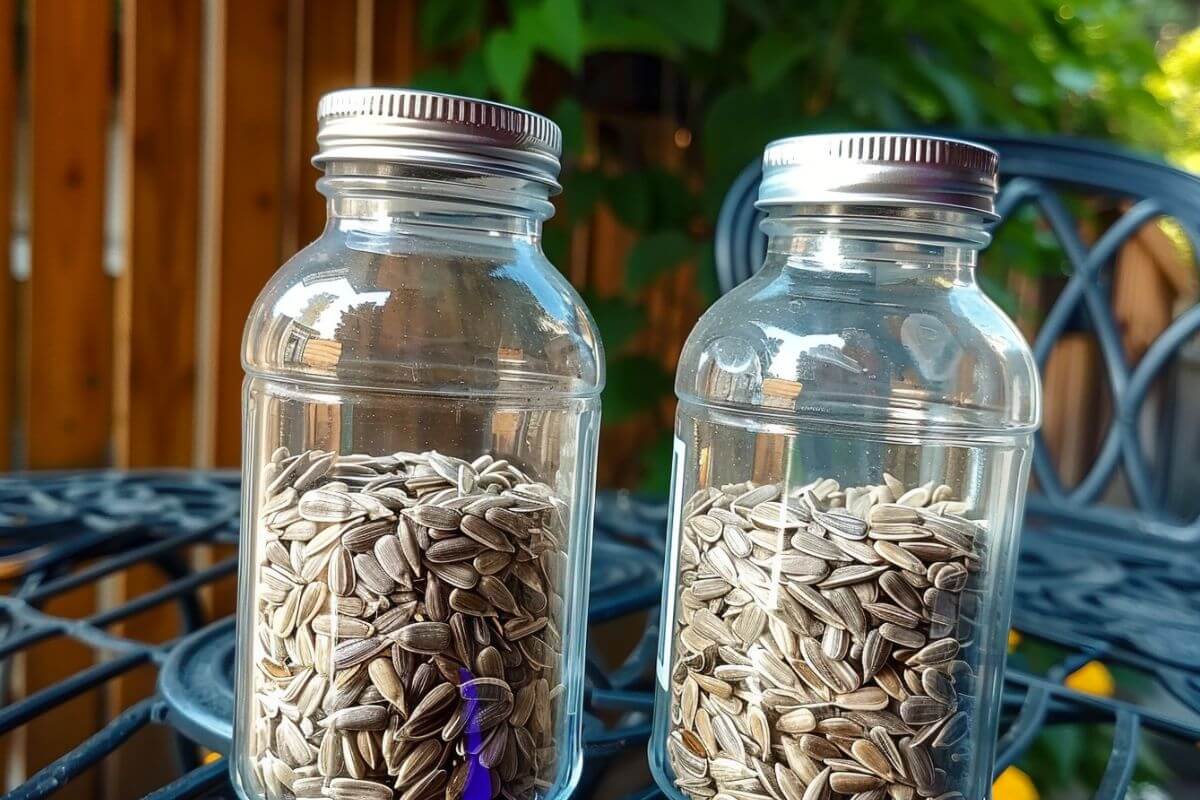
To store sunflower seeds for future planting, follow these steps to keep them viable:
- Choose a cool, dry, dark place to preserve seed quality and prevent early sprouting. Use paper envelopes, glass jars, or dry plastic containers. Make sure the seeds are completely dry if using plastic.
- Airtight containers help seeds last longer. Room temperature is usually fine, but refrigerating or freezing can extend viability. Dry the seeds thoroughly before freezing.
- Dry seeds well before storing to avoid mold. Consider using desiccant packets in containers to soak up extra moisture.
- Label containers with the sunflower type and year harvested for easy identification. Store seeds away from rodents and check for bugs occasionally.
How Long Will Sunflower Seeds Last?
To keep seeds in good condition, store them in your house. Avoid keeping them outside where temperatures change.
Even with proper storage, sunflower seeds last only a year. You need to sow and harvest new seeds yearly.
Use plastic bags or paper seed envelopes for storage. You can also use the freezer or fridge. If using plastic bags, secure them with twist ties or rubber bands. Wet seeds can split open when frozen.
If you plan to eat some seeds, they last 2-3 months in the pantry. An airtight container in the fridge or freezer keeps them edible longer.
Can I Save and Grow Hybrid Sunflower Seeds?
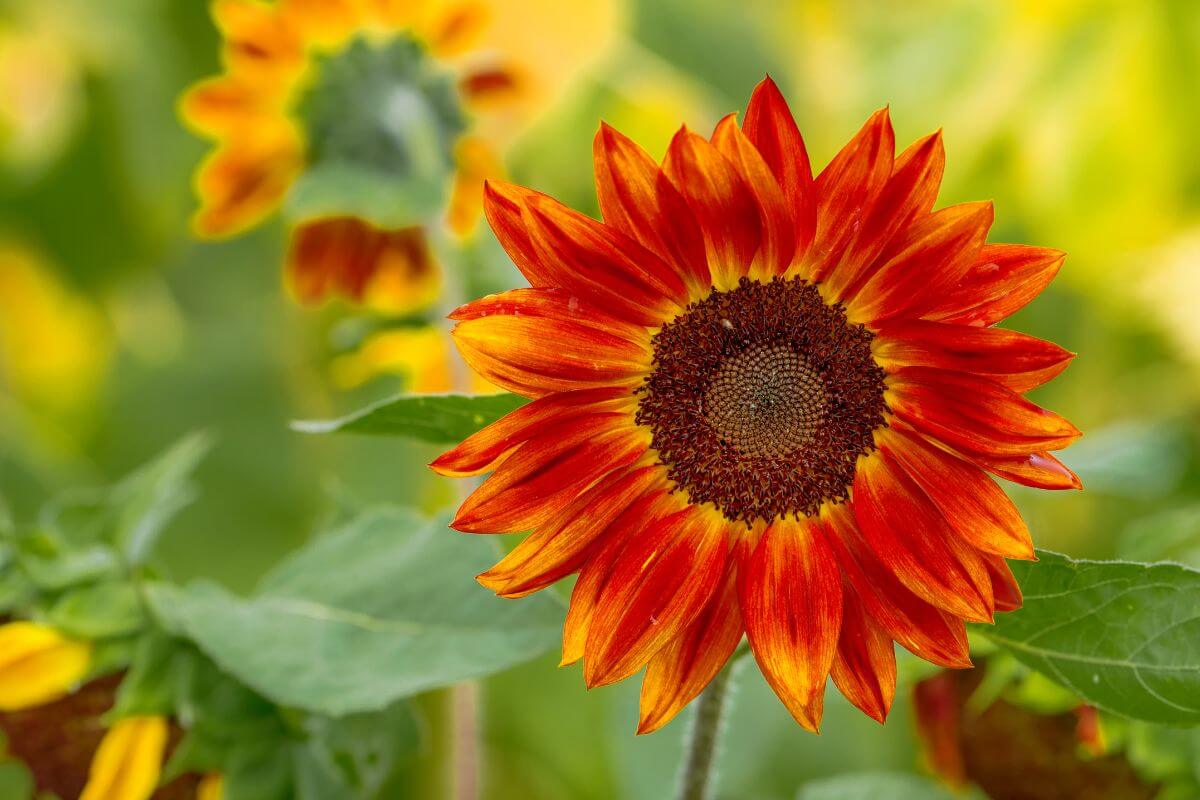
When you breed different parent lines, you get hybrid sunflowers. If you save seeds from these hybrids and plant them, the new plants can show many different traits.
Plants grown from hybrid seeds often look different from their parents. They can vary in size, flower shape, and color. This happens because the genetic traits mix in unexpected ways.
Many tall sunflowers you see in stores are F1 hybrids. These give predictable first-generation crops. But if you save their seeds for next year, the results are less consistent.
If you plant hybrid sunflower seeds, be ready for surprises. Some plants might be shorter, have different colors, or show other unexpected traits.
For consistent results, buy new hybrid seeds every year. This is better than saving seeds from hybrid plants.
If you want to save seeds for replanting, choose open-pollinated or heirloom sunflowers. These types produce offspring that look more like the parent plants.
Final Thoughts on Sunflower Seed Saving
Saving sunflower seeds is a fun activity. You can also experiment by cross-pollinating different varieties to create your own hybrids!
Saving seeds has been done since the start of farming. People have always saved seeds as long as they have grown plants.
Sunflower Seed Saving FAQ
1. What’s the Best Way to Dry Sunflower Heads for Seed Harvesting?
After cutting the sunflower heads, hang them upside down in a warm, dry, well-ventilated area for 4-5 days. Ensure good air circulation to prevent mold. You can protect the seeds from birds by covering them with a paper bag or cheesecloth.
2. How Should I Store Sunflower Seeds After Harvesting?
Store sunflower seeds in a cool, dry, dark place in containers like paper envelopes, glass jars, or dry plastic containers (ensure seeds are fully dry if using plastic). Label containers with the variety and harvest year, and keep them away from rodents.
3. How Do I Know When Sunflower Seeds Are Ready for Harvesting?
Mature sunflower seeds are ready for harvesting when the back of the flower head turns yellow or brown, the petals are dry and falling off, and the seeds feel plump and hard when rubbed.
For how-to guides on other fruits and vegetables, check out these articles:

